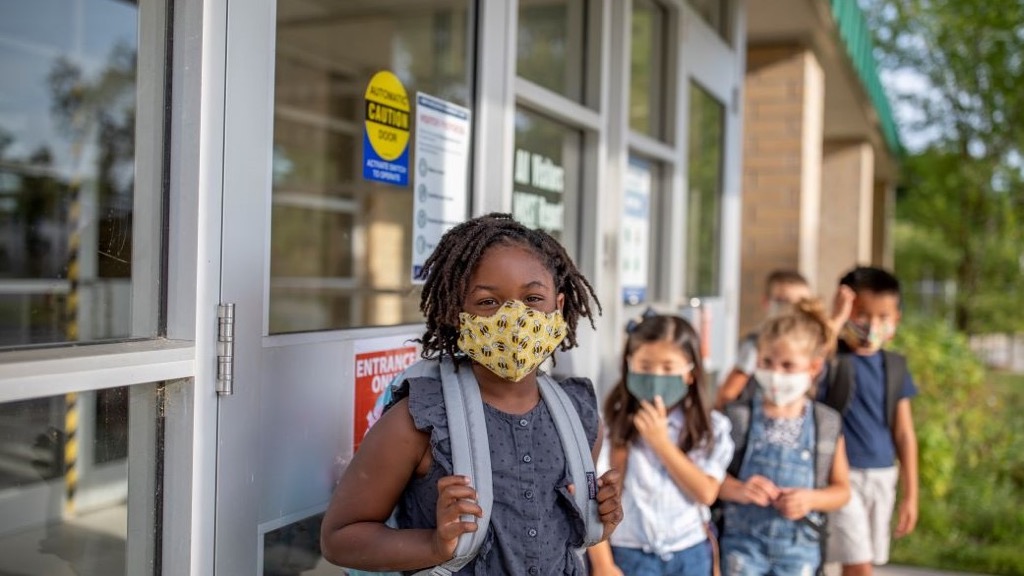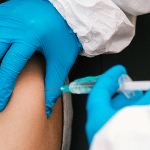
By Dr. Steven Miller, MD, chief clinical officer, Cigna
Tragically, The United States has had about 635,000 people who have died with COVID-19 since the pandemic first began in March of 2020. Let that sink in.
And almost everyone we know knows someone who has suffered from the virus. Now that the back-to-school season is in full gear – along with another COVID-19 surge in the U.S., with over 100,000 people being diagnosed with the virus each day – parents are understandably feeling anxious about sending their children, many of whom cannot be vaccinated, into school buildings.
How the Delta Variant Differs from SARS-CoV-1
One main point of stress for parents is the Delta variant, which is different than the original COVID strain in that it is much more infectious. In fact, when someone is infected with the Delta variant they produce about one thousand times more bio-particles than those who were infected with the original SARS-CoV-1 strain.
It’s understandable that data like this is making some parents anxious about their kids going back to school. The last time we had an average of around 100,000 infections per day was in November 2020—despite this, there are some trends that are improving. The national mortality rate is lower today than it was in November. At the time this article was written (8/20/2021), we saw just about 900 people die from the COVID-19 virus per day, on average, whereas in November, that number was between 3,000 and 4,000 deaths per day.
Being Vaccinated Lessens the Impact of the Delta Variant
The No. 1 reason that the mortality rate is lower today than it was back in November – even though the infection rate is about the same – is because we have done a great job protecting the elderly population. Additionally, it is a younger population that is now getting infected by the virus, which as we know increases the chances of survival. Even for the elderly, the fatality rate is lower today than during the first surge of cases. Additionally, COVID-19 treatments in hospitals, including new therapeutics like monoclonal antibodies, have gotten a lot better in the last 18 months, which is also helping lessen the impact of the Delta variant.
We have done a lot of things right. But what is problematic with this current surge in cases is that it is still overwhelming the hospital system. There are still hospitals that are operating at capacity. We could prevent this if we had wider use of the vaccine. Getting people vaccinated truly is one of the keys towards moving forward.
With the COVID vaccine, even those who do get it can be infected with the virus, though their symptoms will likely be less severe and the risk of death is much lower. Currently, 90% of hospitalized patients are those who are unvaccinated and 95% of the current deaths are unvaccinated people.
There Might be a Light at the End of the Tunnel, Soon
There are many people predicting that we are actually going to get through this fourth wave by October. It makes sense when you run the numbers.
Recent reports show that about 189.9 million people (57% of the total U.S. population) have received at least one dose of the vaccine. About 163.9 million people (49% of the U.S. population) have now been fully vaccinated. Add to this the fact that 37 million Americans (likely more than that if counting those who didn’t test) have already had COVID-19, and it is easy to see that a large percentage of the population already has some degree of immunity. We could very well have 75-80% of people with some form of immunity by the October timeframe, which is similar to what we are seeing around the world in places like India and the United Kingdom.
Masks aren’t 100% Effective—but they do Help Minimize the Spread
Masks worked early on in the pandemic, before we had the vaccines. Think of all of the health care workers who were getting exposed to the virus, yet the incidence of them getting infected with COVID was lower than the general population. The reason? They were appropriately using masks.
However, masks aren’t 100% effective, especially when tested against the Delta variant’s higher viral load. Parents of children that are pre-vaccination age, might consider encouraging their kids to wear a mask – as they do offer some protection.
Kids Tolerate the Delta Variant Better than Adults Do
Research shows that kids younger than ages 10 to 14 are less likely to become infected with the virus compared to people age 20 and older. And while children are being infected at a higher frequency with the current Delta variant, it is still at a relatively low pace.
Kids are also tolerating the infection much better than adults do. But remember: They can get infected and they can spread the infection, so masks do have some beneficial effect—especially in large groups and indoors. Keeping your kids outdoors can also help minimize the spread, and when the vaccine does become available for children under the age of 12—parents may opt to vaccinate.
The last 18 months have been really tough on everyone, but we are making progress. At Cigna, we are committed to helping you and your family navigate the challenges of sending your children back to school.

Coronavirus (COVID-19) Resource Center
Find the latest resources, updates, and vaccine information to help you navigate COVID-19 during this time of uncertainty.